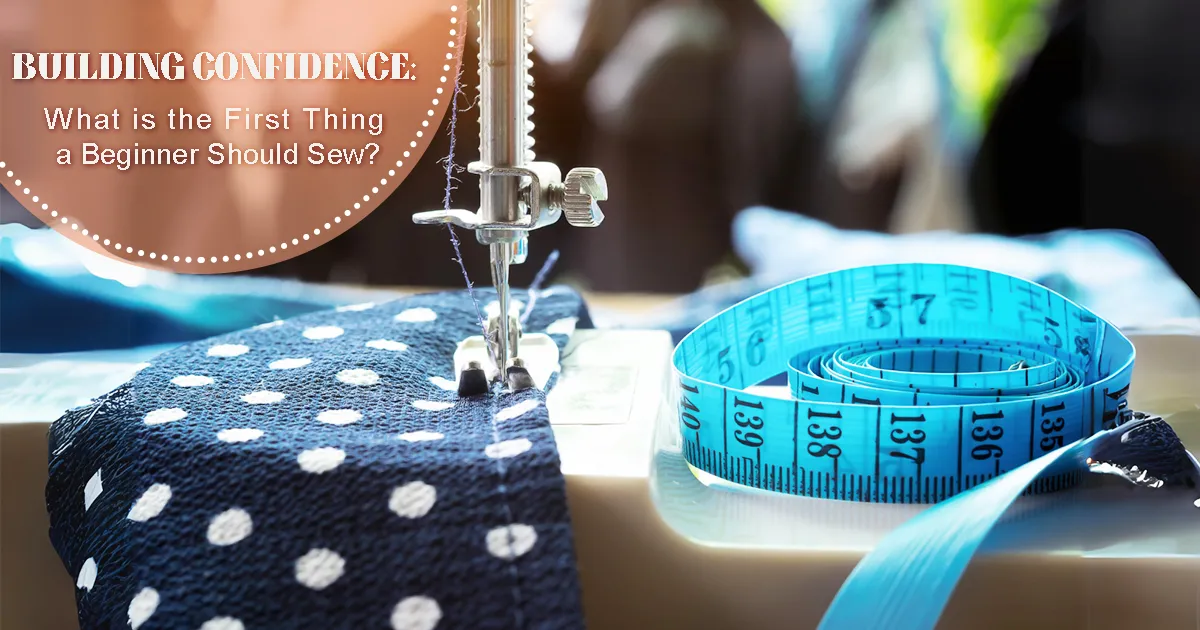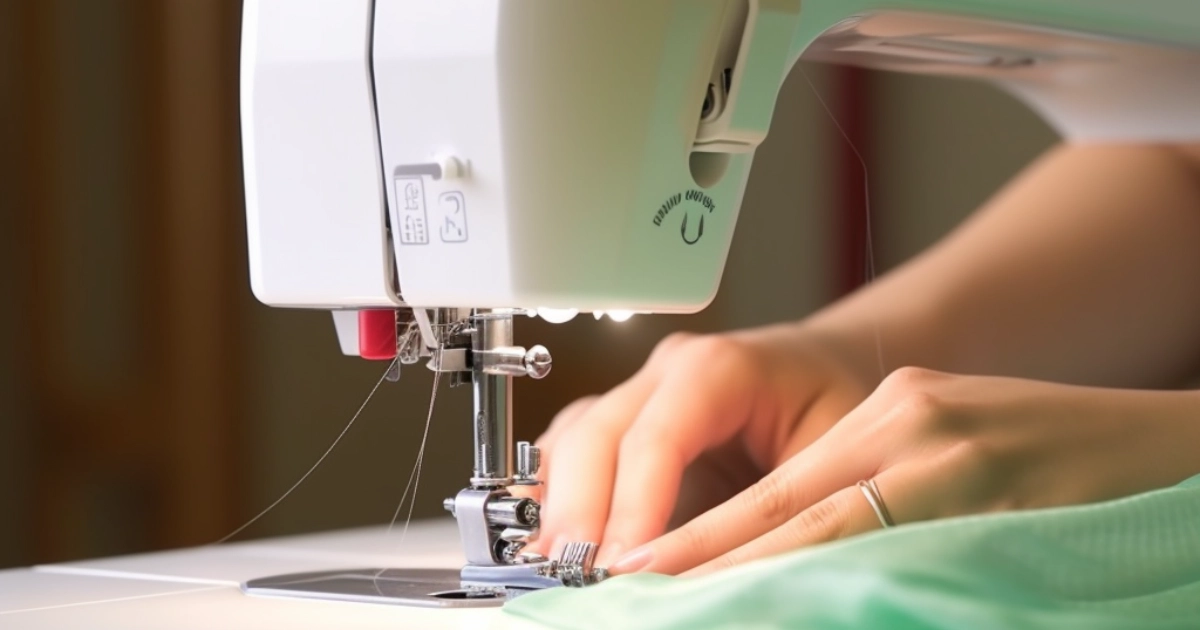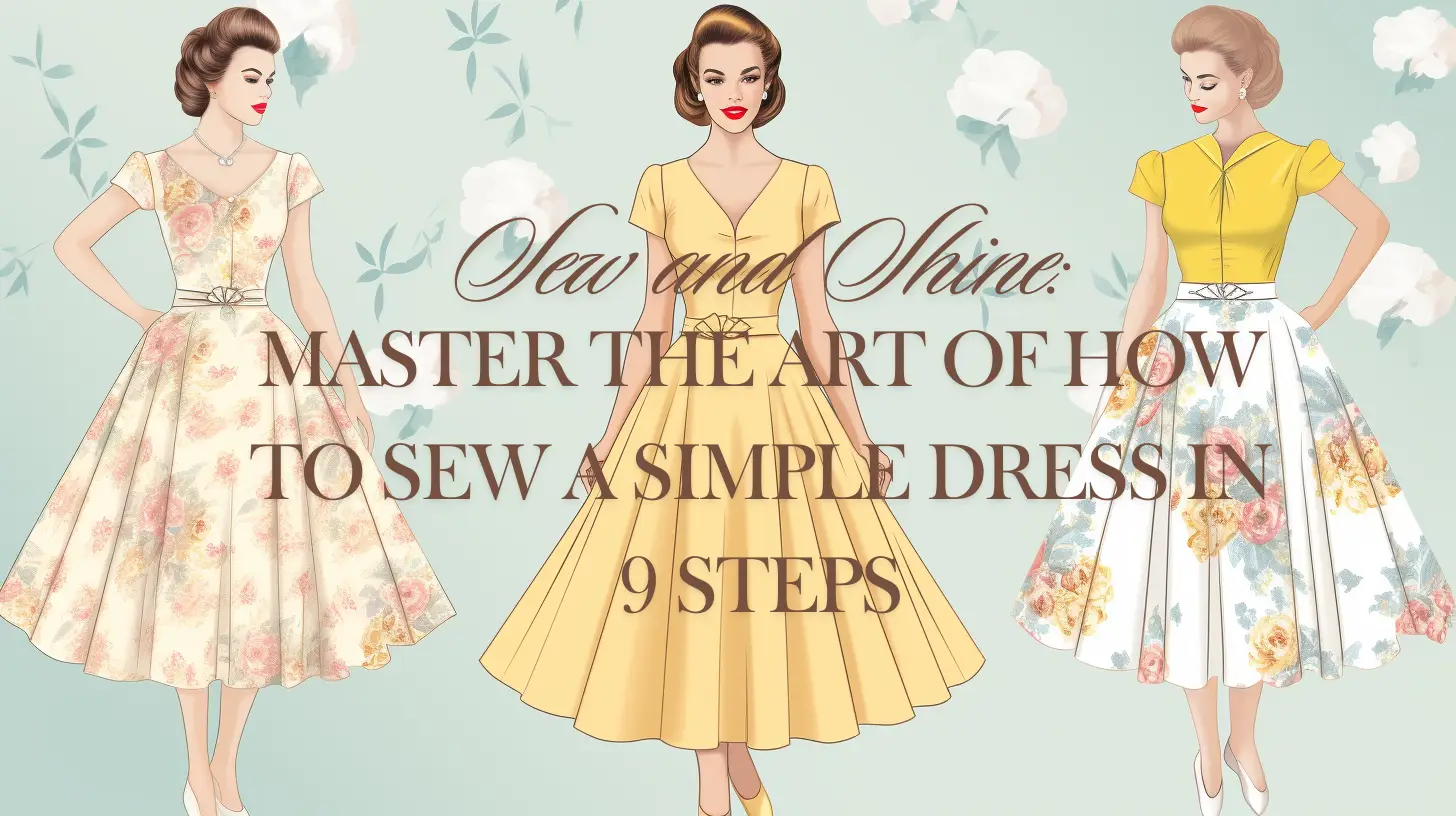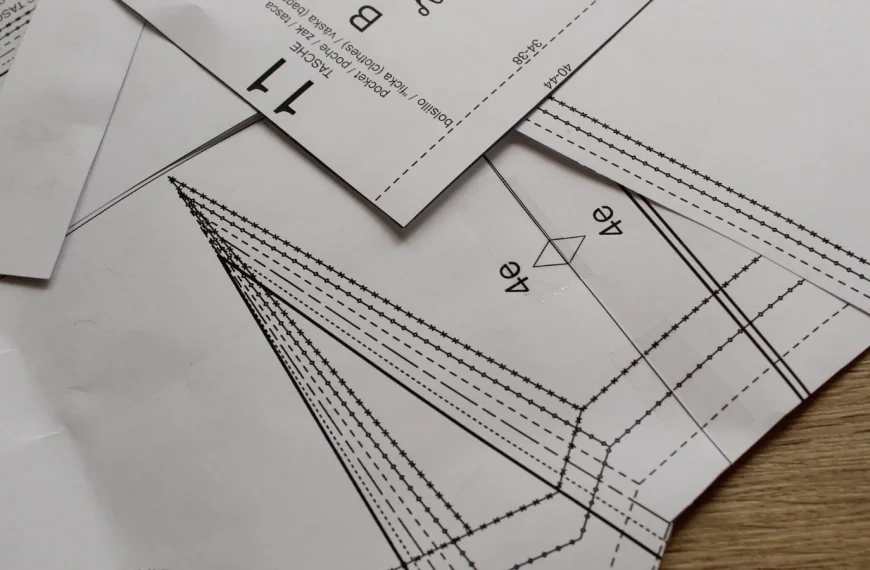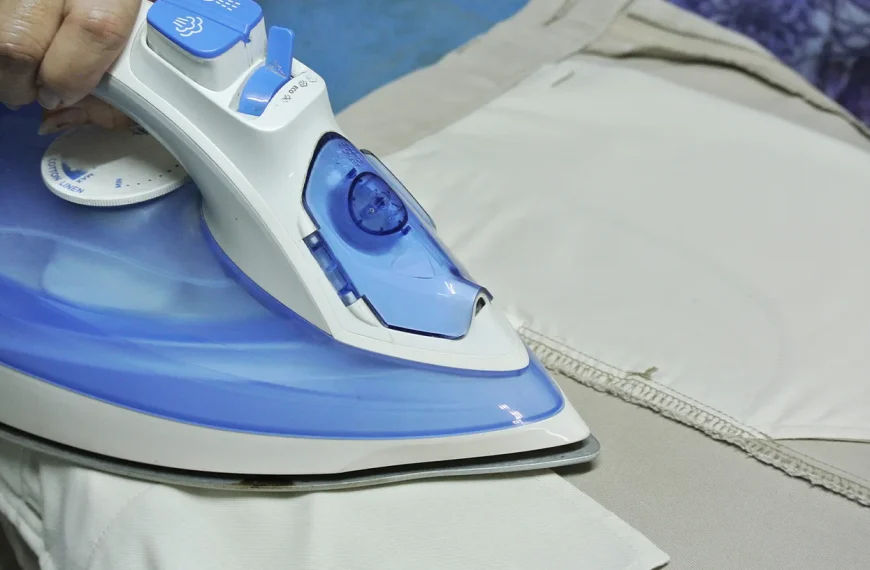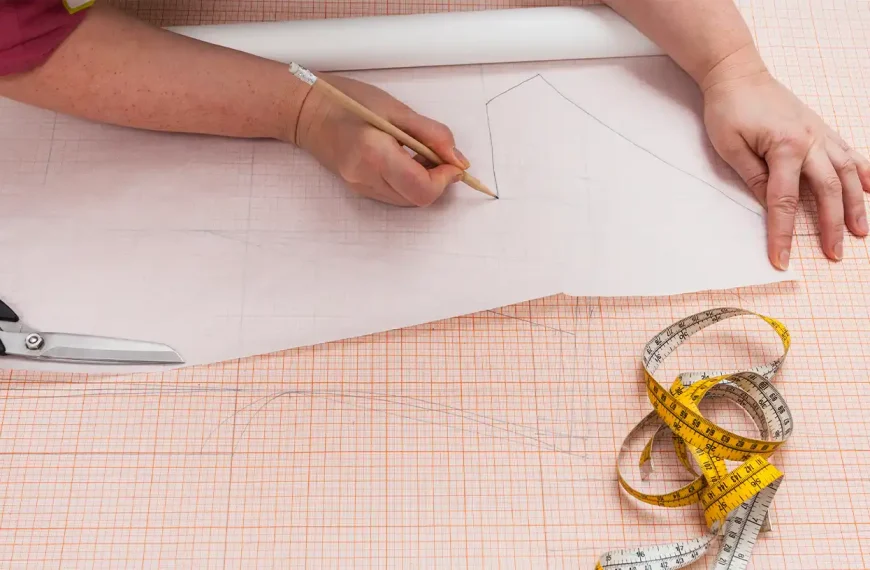What is the first thing a beginner should sew? If you’re a beginner, you must feel overwhelmed. But as long as you start with the basic skills and work your way up to more complicated sewing techniques, you’ll be a confident sewer in no time!
In this guide to sewing for beginners, you’ll learn everything you need to know to get started with sewing. From the necessary supplies to sewing tips and skills to easy beginner projects, we’re here to help you get started right on your sewing journey.
Basic Sewing Supplies: Everything You Need to Get Started Sewing
Before you figure out the question “What is the first thing a beginner should sew?”, you need to understand basic sewing supplies. There is a massive array of sewing supplies and notions available to you. If you walk into any sewing or craft store, you’ll be confronted with walls and walls of supplies. But don’t worry! There are really only a few sewing tools that are truly essential to getting started with sewing.
In this section, we’ll cover which supplies are necessary to have on hand, so you can confidently walk into that store and purchase only what you need and ignore the rest!
Choosing a Sewing Machine
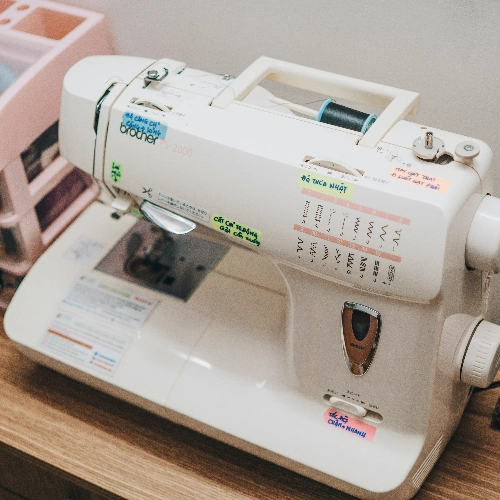
Since you’re new to sewing, there’s no need to spend a fortune on a fancy sewing machine. An inexpensive, entry-level sewing machine will take you well into your sewing journey without any issues.
Make sure that the machine you choose has the following capabilities, and you’ll be good to go! You should be able to easily find a machine that fits these criteria for less than $500.
- Can sew the basic stitches: a straight stitch and a zigzag stitch
- Allows you to control the stitch length and width
- Can backstitch
- Has an automatic buttonhole feature
- Has a built-in light
If you can’t afford a sewing machine or just aren’t sure you want one, you can learn to hand sew instead. However, keep in mind that hand sewing, while relaxing and enjoyable, will make your sewing projects much more time-consuming than machine sewing.
Needles and Thread
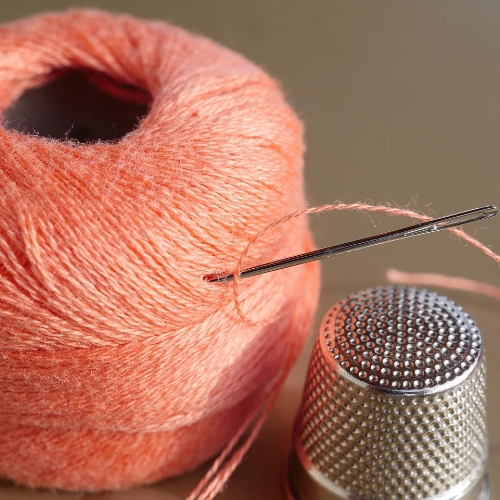
Before you can get started, you will need needles and thread for your sewing machine.
For thread, an all-purpose polyester thread is usually the best option for a beginner. This type of thread is durable, inexpensive, and easy to use. It will work perfectly for almost any project.
Sewing machine needles come in many different types and sizes, which can be overwhelming for a beginner. However, for most projects, either a universal needle or a stretch needle in sizes 75/11, 80/12, or 90/14 will work well. Use a stretch needle on stretchy fabrics and a universal needle on all other fabrics.
Essential Sewing Tools
There are really only a few basic tools you need to start sewing.
- Scissors: Choose a sharp pair of fabric shears and use them only to cut fabric and thread. Cutting paper with them can quickly make them dull.
- Ruler: Having a basic quilting ruler on hand is very important when measuring fabric pieces, especially for quilting projects.
- Measuring Tape: If you’ll be sewing clothing, you’ll need a soft measuring tape to take your measurements to compare to the sizing chart.
- Sewing Pins: Select high-quality, long, straight pins. Pins will help you hold the pieces of fabric together while you sew.
- Seam Ripper: No matter how careful you are, you’ll need to unpick a seam at some point. Everyone makes mistakes occasionally!
- Fabric Marking Tool: Tailor’s chalk or a heat-erasable pen will allow you to make marks on your fabric that can be easily removed after sewing.
- Iron and Ironing Board: Pressing is essential to sewing. You will need to press every seam with your iron after sewing.
Selecting Fabric
As a sewer, fabric is the medium that you will use to create each of your projects. For a beginner, stable, non-stretch fabrics are easy to sew and the best to start with. Medium-weight cotton or flannel are good beginner-friendly options. (Discover your fabric on Longan Craft.)
Once you’ve completed a few projects with easy-to-use fabrics, you can start expanding into using other types of fabric. For example, you might try stretchy or silky fabrics.
If you are using a sewing pattern, make sure to select a fabric type that is listed in the “suggested fabrics” section on the pattern envelope.
How to Use Your Sewing Machine
Learning to use a sewing machine can feel complicated and scary at first, but with a few tips and your trusty user’s manual by your side, you’ll be confident using your machine in no time!
How to Thread a Sewing Machine
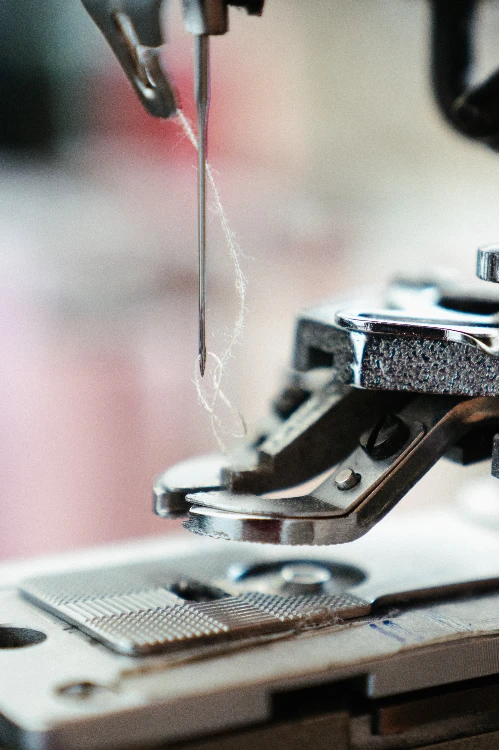
The first step is to thread your sewing machine. It’s very important to know how to thread your machine properly, or it likely won’t form stitches correctly.
To thread your machine, first place a spool of thread on the spool holder at the top of your machine. Then, pull the thread tail through the thread guides, following the instructions in your user’s manual. Finally, thread the tail through the eye of the needle from front to back.
Next, drop a filled bobbin into the bobbin area below the needle. Pull the bobbin thread tail through the thread guides, again using your user’s manual or the instructions printed on your machine. Replace the bobbin cover. You’re ready to sew!
Most Important Sewing Machine Stitches
For most sewing projects, you will need to use either a straight stitch or a zigzag stitch.
Generally, select the straight stitch when sewing non-stretch fabrics and the zigzag for stretch fabrics. This is important because the zigzag stitch has some give and will allow the fabric to stretch without breaking any stitches. If you were to use a straight stitch on stretchy fabric, it might result in popped seams when the fabric is stretched.
Practice, Practice, Practice!
The real key to getting confident using a sewing machine is practice. Spend some time sewing straight lines across scrap pieces of fabric. Being able to sew a straight line is one of the most essential sewing skills.
Practice adjusting the speed of your machine with the foot pedal while you sew. This will help you get comfortable with your machine and allow you to start developing a feel for controlling the speed and direction of your stitches.
Basic Sewing Skills to Master
As you start learning to sew, there are a few sewing skills you need to master. These three skills will come up again and again as you take on various sewing projects.
However, don’t limit yourself to just learning these three skills. They are a good starting point, but each project you sew will allow you to develop new skills. With sewing, you’ll learn as you go.
Maintaining Consistent Seam Allowances
The seam allowance is how far from the edge of the fabric your seam should be sewn. This measurement is usually included in the instructions for your sewing pattern.
It’s essential to be able to sew consistent seam allowances, keeping your stitches the correct distance from the edge of the fabric at all times. If your seam allowances are not consistent, your seams may look wavy, or the finished item may end up being the completely wrong size.
Finishing Seam Allowances
The edges of most non-stretch fabrics will fray, especially in the wash. That’s why it’s important to finish your seam allowances.
Finishing seam allowances means covering the raw edges of the fabric with stitching to help prevent fraying. To do this, sew a zigzag stitch along all the edges of your cut fabric pieces before stitching them together.
Don’t Forget to Press
Pressing is absolutely critical in sewing! Many beginners skip this important step, but the results you’ll achieve will be much more professional if you always remember to press your seams.
Use your iron to press each seam right after you sew it. You can either press the seam allowances open, pressing them away from each other, or press both seam allowances together in one direction.
Best Beginner Sewing Projects: Easy & Free Sewing Patterns and Projects
Honing your skills on actual projects is the best way to start learning to sew confidently. We’ve compiled a list of some of the best sewing projects for beginners.
Home Décor Sewing Projects
- A pillowcase is one of the first sewing projects many sewers take on, and for good reason! It’s one of the easiest sewing projects—all rectangles and straight lines.
- A bowl cozy is another great beginner project as you learn to sew. They also make great gifts if you want to share your love of sewing with the people in your life.
Bag Sewing Projects
- A tote bag is the perfect place to start when it comes to sewing bags. This free sewing pattern and tutorial create a simple and useful bag that any beginner can sew.
- If you want to learn how to sew zippers, a simple zippered pouch is a great, easy sewing project to practice on.
Free Garment Sewing Patterns for Beginners
- If you want to sew a garment, there’s no need to wait until you don’t feel like a beginner! Try a simple elastic-waisted skirt. This simple design comes together quickly, is easy to sew for beginners, and doesn’t require precise fitting. (Related: Sew and Shine: Master the Art of How to Sew a Simple Dress in 9 Steps)
- A loose, flowy dress is another great beginner-friendly option. This trapeze dress is a simple sewing pattern, perfect for your first garment sewing project.
- If you’re building your confidence, try a fitted dress with a zipper. This project will help you gain new skills as an advanced beginner or intermediate sewer.
Beginner Quilt Projects
- A quilted potholder is a wonderful quilting project for a beginner in sewing and quilting. This project allows you to practice quilting and sewing binding. Plus, the finished potholder will be not only beautiful but also useful!
- These coasters are cute and super simple to make. This is a great way to get you started with quilting!
Hand Sewing Projects: No Sewing Machine Needed
- Scrunchies are quick, easy, and a great way to use up fabric scraps. They can be machine sewn or hand sewn, whichever you prefer.
- Try this easy Christmas ornament sewing pattern; it’s the perfect project to allow you to practice your hand stitches.
FAQs
Q: What is the first thing a beginner should sew?
A: The first thing a beginner should sew is something simple like a tote bag or a pillowcase. These projects are ideal for sewing beginners as they require minimal sewing techniques and can be completed quickly.
Q: What are some sewing tips for beginners?
A: Some helpful sewing tips for beginners include using sharp scissors to cut fabric, pinning fabric pieces together before sewing, and starting with a small and manageable sewing project. It is also important to choose the right fabric and thread for your project.
Q: How can I learn to sew?
A: There are several ways to learn sewing. You can take sewing classes at a local community center or sewing store, watch online tutorials, or learn from sewing books. Starting with beginner sewing patterns and practicing regularly will also help you improve your sewing skills.
Q: What are some beginner sewing patterns?
A: Some popular beginner sewing patterns include simple skirts, basic tops, and pajama pants. These patterns usually have fewer pieces and are designed to be easy to follow for those who are new to sewing.
Q: Should I sew by hand or use a sewing machine?
A: The choice between sewing by hand or using a sewing machine depends on the project and your personal preferences. Hand sewing is often ideal for small repairs, delicate fabrics, or intricate details. However, a sewing machine is faster and more efficient for larger projects or when working with sturdy fabrics.
Q: What sewing techniques should beginners learn?
A: Some essential sewing techniques for beginners to learn include sewing straight lines, turning corners, backstitching, and creating even seams. Mastering these techniques will give you a solid foundation for more complex sewing projects.
Q: How do I choose the right sewing machine?
A: When choosing a sewing machine, consider your sewing needs and skill level. Look for a machine that has basic stitches, an adjustable speed, and is suitable for the types of fabrics you will be working with. Reading reviews and seeking recommendations from sewing enthusiasts can also be helpful.
Q: Do I need any special tools or supplies to start sewing?
A: To start sewing, you will need basic tools such as a sewing machine, sharp scissors, pins, needles, measuring tape, and a seam ripper. It is also recommended to have a variety of thread colors, different types of fabric, and a sewing kit with additional accessories.
Q: What are some first projects I can sew?
A: As a beginner, you can sew simple projects like a tote bag, a pillowcase, or a drawstring pouch. These projects will allow you to practice sewing techniques and gain confidence in your skills.
Q: How can I improve my sewing skills as a beginner?
A: To improve your sewing skills as a beginner, it is important to practice regularly and take on new sewing projects that challenge you. You can also join sewing communities or forums to learn from experienced sewers and get feedback on your work.

